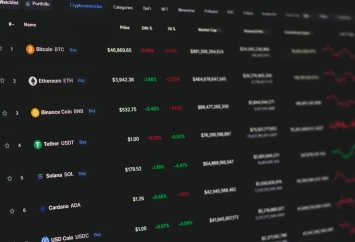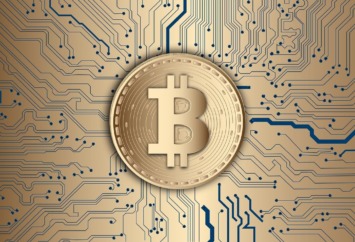In the rapidly changing world of cryptocurrencies, certain digital assets have gained notable attention from investors, financial institutions, and everyday users. Among them, XRP emerges as a distinct and fascinating player in the cryptocurrency market. It’s important to recognize that cryptocurrencies are not merely speculative investments; they are increasingly being integrated into various financial systems and transactions.
The cryptocurrency market, encompassing Bitcoin, Ethereum, and other digital assets, is known for its volatility, innovation, and capacity to transform traditional financial systems. The advent of stablecoins, decentralized finance (DeFi), and the growing synergy between decentralized finance and traditional finance (TradFi) has made this space more dynamic than ever.
Understanding the unique features and applications of each cryptocurrency is vital when considering investment or usage. XRP, in particular, has drawn attention due to its regulatory challenges, technological developments, and practical applications.
This article will delve into XRP’s functionality, its role in the cryptocurrency market, and its potential impact. Whether you’re an experienced investor or new to digital assets, this guide aims to equip you with the knowledge needed to make informed decisions about XRP.
Understanding XRP
Origins and Development
XRP, the native cryptocurrency of the XRP Ledger, has a fascinating history that dates back to the early days of the cryptocurrency era. In 2011, a group of engineers including David Schwartz, Jed McCaleb, and Arthur Britto, inspired by Bitcoin but concerned about its energy consumption and scalability issues, set out to create a more sustainable and efficient system. This initiative led to the development of the XRP Ledger, which was launched in June 2012.
The founders of XRP aimed to address Bitcoin’s limitations, such as high energy consumption from mining and risks of centralization. Instead of using Bitcoin’s proof-of-work (PoW) consensus mechanism, they developed the Ripple Consensus Protocol. This protocol relies on a network of trusted validators to verify transactions, significantly reducing energy consumption and enhancing scalability.
The Role of XRP in Ripple’s Ecosystem
XRP plays a pivotal role in the Ripple ecosystem, serving multiple critical functions that set it apart from other cryptocurrencies. Firstly, XRP is used as a bridge currency to facilitate cross-border payments. Financial institutions can use XRP to convert one currency into another, bypassing traditional intermediaries and reducing transaction costs and times. This capability makes XRP an attractive option for international transactions, processing payments in mere seconds with minimal fees.
Another key function of XRP is its role in ensuring the security and efficiency of the XRP Ledger. Each transaction on the network incurs a small fee paid in XRP, which is subsequently destroyed. This mechanism helps prevent spam and denial-of-service attacks on the network while reducing the total supply of XRP over time, potentially increasing its value due to scarcity.
XRP is also integral to the operation of RippleNet, a suite of products designed for banks, payment providers, and digital asset exchanges. While not all RippleNet solutions require XRP (e.g., xCurrent and xVia), XRP is essential for xRapid, which uses XRP to provide liquidity for cross-border payments. This integration enables seamless and cost-effective transactions across various currencies and borders.
In summary, XRP is more than just a digital asset; it is a fundamental component of the Ripple ecosystem, enabling fast, secure, and cost-efficient transactions that bridge the gap between traditional finance and blockchain technology.
Technical Aspects of XRP

XRP Ledger and Consensus
The XRP Ledger (XRPL) is the backbone of the XRP ecosystem, and its technical architecture distinguishes it from other cryptocurrencies. Unlike Bitcoin, which uses a proof-of-work (PoW) consensus mechanism, the XRP Ledger employs the Ripple Consensus Protocol. This protocol relies on a network of trusted validators to reach consensus on the state of the ledger. Validators, selected from a recommended list called the Unique Node List (UNL), collaborate to validate transactions every 3 to 5 seconds, ensuring rapid and efficient transaction settlement.
The consensus process on the XRP Ledger is designed to be energy-efficient and scalable. It does not require the computational power and energy consumption associated with mining in PoW systems. Instead, validators agree on the validity of transactions through a voting process, significantly reducing the time and cost of transaction validation. This approach also makes the XRP Ledger more eco-friendly compared to energy-intensive PoW systems like Bitcoin.
XRP vs. Bitcoin: A Comparative Analysis
Consensus Mechanism
- Bitcoin: Uses a proof-of-work (PoW) consensus mechanism where miners compete to solve complex mathematical puzzles to validate transactions and secure the network. This process is energy-intensive and can be slow, with transaction times averaging around 10 minutes.
- XRP: Employs the Ripple Consensus Protocol, which relies on a network of trusted validators to reach consensus. This method is faster, more energy-efficient, and allows for transaction validation in seconds.
Transaction Speed and Cost
- Bitcoin: Transactions can take longer to confirm, especially during periods of high network demand, and often incur higher fees. This makes Bitcoin less suitable for rapid, low-cost transactions.
- XRP: Transactions are confirmed quickly, typically within 3-5 seconds, with minimal fees. This makes XRP highly suitable for cross-border payments and other applications requiring fast and cost-effective transactions.
Decentralization and Control
- Bitcoin: Highly decentralized with a global community of miners and node operators. There is no central governing body, and the network’s security and functionality are maintained through consensus among its participants.
- XRP: While the XRP Ledger is open-source and decentralized in its operation, Ripple Labs, the company behind XRP, holds a significant portion of XRP tokens and has influence over the network’s development. This has led to discussions about the level of centralization within the XRP ecosystem.
Environmental Impact
- Bitcoin: Criticized for its high energy consumption due to the PoW consensus mechanism. This has raised concerns about its environmental sustainability.
- XRP: Much more energy-efficient, using significantly less electricity than Bitcoin, comparable to running an email server. This makes XRP a more environmentally friendly option.
Understanding these technical differences is key for evaluating the strengths and weaknesses of XRP and its position within the broader cryptocurrency market.
Practical Uses and Applications

Banking and Financial Services Integration
XRP has made significant advancements in integrating with traditional banking and financial services, offering practical applications that improve the efficiency and cost-effectiveness of financial transactions. One of its most notable uses is in cross-border payments. Ripple’s solutions, such as xCurrent and On-Demand Liquidity (ODL), enable financial institutions to perform international transactions rapidly and at a fraction of the cost compared to traditional systems.
For example, banks like Santander and SBI Holdings have adopted Ripple’s technology, utilizing XRP as a bridge currency to facilitate transactions between different fiat currencies without requiring pre-funded accounts in foreign countries. This approach significantly reduces capital costs and enhances liquidity for businesses managing cross-border remittances and payments.
XRP also plays a vital role in improving liquidity in global financial markets. Ripple’s ODL service uses XRP to provide liquidity for transactions on RippleNet, allowing institutions to avoid holding multiple currencies in various regions. This eliminates risks associated with fluctuating exchange rates and frees up capital that would otherwise be tied up in nostro accounts. Additionally, cryptocurrency exchanges use XRP to settle transactions quickly and efficiently, making it an ideal intermediary asset for handling large trading volumes.
In the domain of central bank digital currencies (CBDCs), XRP is being explored as a potential bridge asset for integrating CBDCs into global financial systems. Ripple has partnered with several central banks to develop customized blockchain solutions, leveraging XRP’s efficiency to support scalability and cross-border interoperability. This positions XRP as a viable solution for enabling instant cross-border settlements between digital currencies, which is essential for the seamless operation of CBDCs.
Microtransactions and IoT
XRP’s unique features make it an excellent choice for micropayments and Internet of Things (IoT) transactions, areas where traditional payment systems face significant hurdles. In the context of micropayments, XRP’s low transaction fees and fast processing speeds are ideal for enabling small-value transactions that are often impractical with traditional systems. For instance, XRP’s transaction fees are fractions of a cent, allowing businesses and content creators to monetize small actions such as reading articles, streaming content, or purchasing in-app items. This opens up new business models in digital media, pay-per-use services, and other microtransaction-based industries.
For IoT transactions, XRP’s scalability, low-cost nature, and speed are key. IoT devices often require real-time payments for services or resources, such as autonomous vehicles paying for tolls or charging stations. XRP’s ability to settle transactions within 3-5 seconds ensures that these payments are processed instantaneously, enabling smooth operations within IoT networks. This capability supports high-throughput transactions without delays, even when numerous devices are involved, making XRP indispensable for powering machine-to-machine payments and micro-subscriptions in the IoT ecosystem.
In summary, XRP’s practical applications go far beyond speculative value, delivering tangible benefits in banking, financial services, micropayments, and IoT transactions. Its integration into these sectors is revolutionizing financial transactions, making them faster, cheaper, and more efficient.
Conclusion
In conclusion, XRP stands out as a unique and powerful player in the cryptocurrency market, driven by its innovative consensus mechanism, low transaction fees, and rapid processing times.
Key points to remember include XRP’s use of the Ripple Consensus Protocol, which is more energy-efficient and scalable than traditional proof-of-work or proof-of-stake systems. XRP’s integration with financial institutions through RippleNet has revolutionized cross-border payments, making them faster, cheaper, and more reliable.
As you consider XRP, keep in mind its eco-friendly nature, high scalability, and the significant partnerships it has with leading banks and financial services. Whether you are an investor, a business looking to enhance your payment systems, or simply curious about the potential of cryptocurrencies, XRP offers a compelling case for its utility and future growth.
Take the next step by exploring how XRP can fit into your financial strategy, whether through investment, using its payment solutions, or staying updated on its regulatory and market developments. With its strong staying power and continuous innovation, XRP is an asset worth considering in the evolving landscape of digital currencies.


